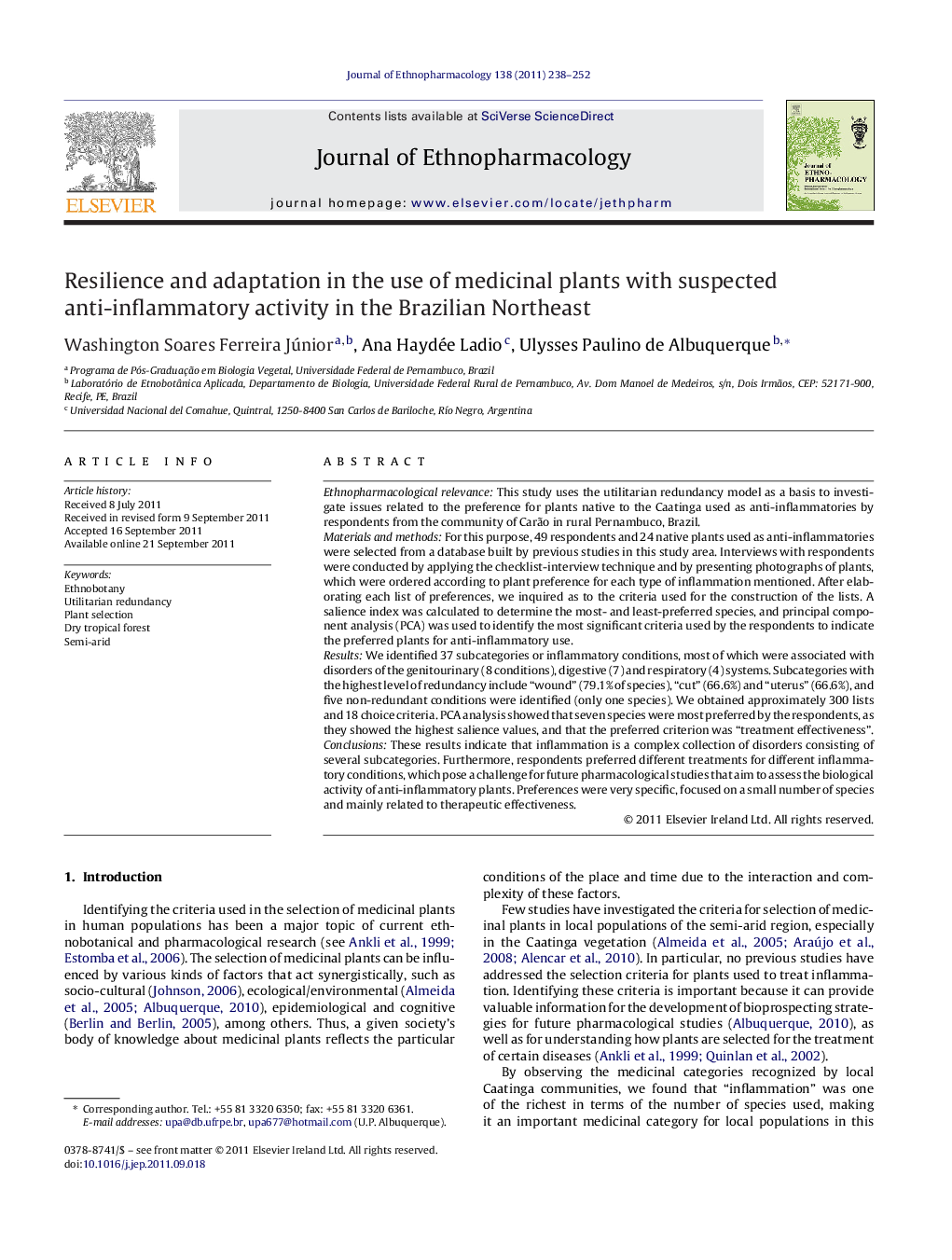| کد مقاله | کد نشریه | سال انتشار | مقاله انگلیسی | نسخه تمام متن |
|---|---|---|---|---|
| 5839262 | 1123989 | 2011 | 15 صفحه PDF | دانلود رایگان |
عنوان انگلیسی مقاله ISI
Resilience and adaptation in the use of medicinal plants with suspected anti-inflammatory activity in the Brazilian Northeast
دانلود مقاله + سفارش ترجمه
دانلود مقاله ISI انگلیسی
رایگان برای ایرانیان
کلمات کلیدی
موضوعات مرتبط
علوم پزشکی و سلامت
داروسازی، سم شناسی و علوم دارویی
داروشناسی
پیش نمایش صفحه اول مقاله

چکیده انگلیسی
Ethnopharmacological relevanceThis study uses the utilitarian redundancy model as a basis to investigate issues related to the preference for plants native to the Caatinga used as anti-inflammatories by respondents from the community of Carão in rural Pernambuco, Brazil.Materials and methodsFor this purpose, 49 respondents and 24 native plants used as anti-inflammatories were selected from a database built by previous studies in this study area. Interviews with respondents were conducted by applying the checklist-interview technique and by presenting photographs of plants, which were ordered according to plant preference for each type of inflammation mentioned. After elaborating each list of preferences, we inquired as to the criteria used for the construction of the lists. A salience index was calculated to determine the most- and least-preferred species, and principal component analysis (PCA) was used to identify the most significant criteria used by the respondents to indicate the preferred plants for anti-inflammatory use.ResultsWe identified 37 subcategories or inflammatory conditions, most of which were associated with disorders of the genitourinary (8 conditions), digestive (7) and respiratory (4) systems. Subcategories with the highest level of redundancy include “wound” (79.1% of species), “cut” (66.6%) and “uterus” (66.6%), and five non-redundant conditions were identified (only one species). We obtained approximately 300 lists and 18 choice criteria. PCA analysis showed that seven species were most preferred by the respondents, as they showed the highest salience values, and that the preferred criterion was “treatment effectiveness”.ConclusionsThese results indicate that inflammation is a complex collection of disorders consisting of several subcategories. Furthermore, respondents preferred different treatments for different inflammatory conditions, which pose a challenge for future pharmacological studies that aim to assess the biological activity of anti-inflammatory plants. Preferences were very specific, focused on a small number of species and mainly related to therapeutic effectiveness.
ناشر
Database: Elsevier - ScienceDirect (ساینس دایرکت)
Journal: Journal of Ethnopharmacology - Volume 138, Issue 1, 31 October 2011, Pages 238-252
Journal: Journal of Ethnopharmacology - Volume 138, Issue 1, 31 October 2011, Pages 238-252
نویسندگان
Washington Soares Ferreira Júnior, Ana Haydée Ladio, Ulysses Paulino de Albuquerque,